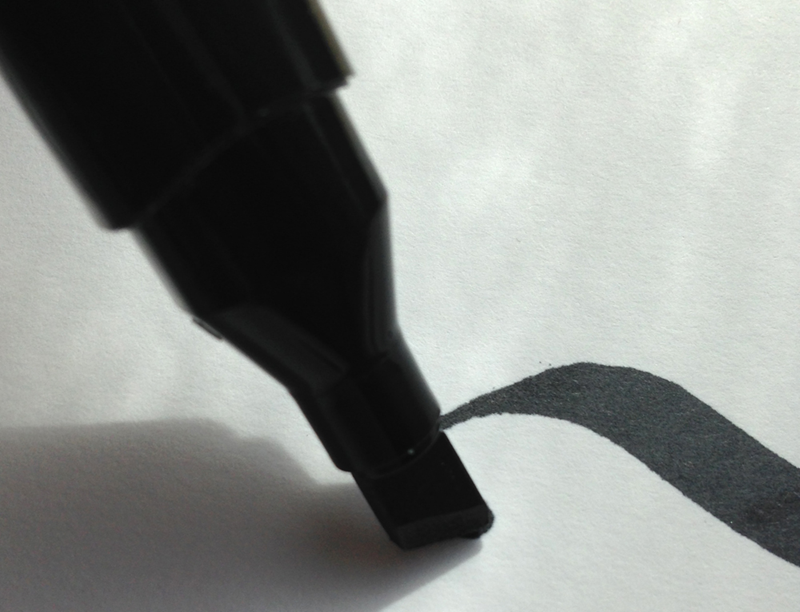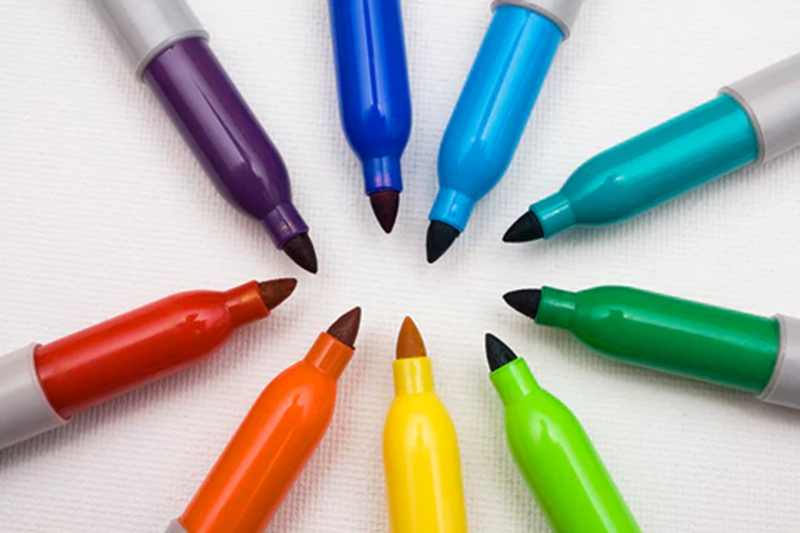Markers have come a long way since their inception as before they could only be used on paper. Nowadays they're as advanced as markers can be, as you can use paint markers on pretty much everything without worrying about it coming off. Markers also come in packs or sets which makes it easier to get a collection of different ones with different shaped tips and colours.
Getting a set of markers is also a more cost-effective purchase than just buying them one by one which is a time-consuming process. With a marker pack, you're able to start with your hobby as soon as they are at your doorstep and they're also ideal for beginners as you have everything you need to start in one package.
Marker Tips
Chisel
The only part of a marker that comes in contact with the surface you're painting with is the tip and it comes in different variations such as a chisel tip. Markers with a chisel tip are quite versatile since they have a flat, wide side and a pointy side. With chisel tip marker packs, you are able to put down a lot of colour with ease and create thinner strikes just by turning the marker the other way. However, markers with chisel tips aren't able to achieve the thinnest strokes.
Brush
In order to create thinner strokes than those you can with a chisel tip, you should consider making a brush tip marker part of your paint marker set. With a brush tip, you can do detailed work more easily and you can also use them to fill large areas by flattening the brush. With a brush tip marker, you can make strokes with variable width just because the tip itself has a more circular body than a chisel tip. Also known as brush pens, some markers with a brush tip allow you to replace the tips when they are worn off.
Bullet
A bullet tip is similar to a brush tip, however, it's much smaller and not as pointy as a brush tip. Markers with bullet tips are considered great all-round markers as they don't excel in both detailed work or when it comes to filling in large areas. This is what makes a bullet tip marker a lot more affordable than both a chisel and a brush tip marker.
Fine
With a fine tip marker, you can create the finest of details and patterning. These tips are the smallest in size and thus allow you to make technical details too just make sure to have a steady hand when doing so. Using a fine tip marker to fill any large blocks of colour is simply impractical and tedious.
Double-Ended
With a double-ended marker, you get a tip on both ends which means double the versatility and practicality of a single-tip marker. Typically you'd see a brush and a chisel tip as the most popular combination but you can also have a bullet tip and chisel tip combo. Unfortunately, a fine tip is rarely combined with any other tip on a double-ended marker.
Additional Factors to Consider
Blending
While you may not be making use of blending as a technique, in the future you'll definitely want to explore it as it can make your drawings look a lot better. Blending allows you to make the highlights in your drawings which make them look more realistic.
Keep in mind though if you plan on blending make sure to go for alcohol-based markers instead of water-based ones as the former makes it much easier to blend different colours and the results are much better too. Also, avoid blending in with both water-based and alcohol-based markers as that will make things even more difficult and the result won't be nearly as good as you expect.
Colour Range
When choosing marker packs you should take into consideration the range of colours you want to be able to work with. If you want the widest colour range there is then you should go for alcohol-based markers. Having a wide range of coloured markers also makes it a lot easier to get better at what is known as tonal gradation.
Lightfastness
This is something that not a lot of people focus on when buying their first paint marker set and it has to do with how well the paint left on any surface fades away. The ability to resist that fading is known as lightfastness and the better the quality of a marker pack the better the lightfastness of the markers.
Usually, markers that are able to resist fading quite well are labelled as lightfast or archival which means they're able to hold their colour for decades. This is usually the case with markers that contain pigments instead of dye. Also, know that permanent markers are not truly lightfast as they also fade.